class: center, middle, inverse, title-slide # FSU activity report: 03/2017 - 12/2017 ## <html> <div style="float:left"> </div> <hr color='#EB811B' size=1px width=796px> </html> ### Patrick Schratz, Jannes Muenchow, Marco Pena, Daphne Meyreiss, Alexander Brenning ### LIFE Healthy Forest Meeting, Vitoria, 13 Dec 2017 --- layout: true <div class="my-header"><img src="figs/life.jpg" style="width = 5%;" /></div> --- # Outline 1) Action A2.1.6: **Acquisition of hyperspectral imagery** 2) Action B1.1: **Spatial mapping using statistical and machine-learning data analysis** --- class: inverse, center, middle # Action A2.1.6: Acquisition of hyperspectral imagery <html><div style='float:left'></div><hr color='#EB811B' size=1px width=720px></html> --- # Acquisition of hyperspectral imagery ## Prior to March 2017 * Hyperspectral imagery was acquired by HAZI in September 2016 for all plots (28 in total) * Unfortunately, one of the five demonstration plots ("hernani") was not covered by the flight mission * FSU helped with the planning of the flight routes (Marco Pena) * Hyperspectral sensors Hyperion-1 was decomissioned in January without prior notice * Airborne AVIRIS data as a replacement not suitable (price, flights only in US) * No other spaceborne hyperspectral sensor available --- # Acquisition of hyperspectral imagery ## March 2017 - Now We decided to acquire spaceborne multispectral Sentinel-2 data as an alternative for Hyperion-1 data. **Aim:** Time-series analysis of the vegetation period for 2016 and 2017 ## Why time-series analysis? * Due to the offset in both spatial and radiometric-resolution (1m vs. 10m, 126 bands vs. 10 bands) it is not possible to directly compare multispectral images and hyperspectral images. * Time-series analysis might reveal changes over time of infested trees by using various indices (e.g. vegetation indices). * Possible trends can still be post-analysed with hyperspectral imagery from September 2016. --- # Acquisition of hyperspectral imagery Acquisition period: * March 2016 - November 2016 * March 2017 - November 2017 * Repetition rate: 10 days So far we acquired **391 images** (each 500MB) in total resulting combining to ~ **200GB** of raw data. For every of the 27 plots we have **135** images. These got cropped to the respective plot extent leaving a total of **70 MB** for the complete time-series. **Daphne Meyreiss** (student assistant) was in charge of the processing. Pre-processing (Download, cropping) of all plots is planned to be finished at the end of 2017. **Deliverable contributions:** * Remotely-sensed forest health map (06/2018) *B1* * Integrated analysis of characterization results at large scale (01/2019) *B1* * Maps of forest disease potential (10/2018) *B1* --- # Acquisition of hyperspectral imagery ## Plot "Caranca" with both hyperspectral airborne and multispectral Sentinel-2 image .pull-left[.center[ Multispectral image (Sentinel-2, 10m) </br>  ]] .pull-left[.center[ Hyperspectral image (airborne, 1m) 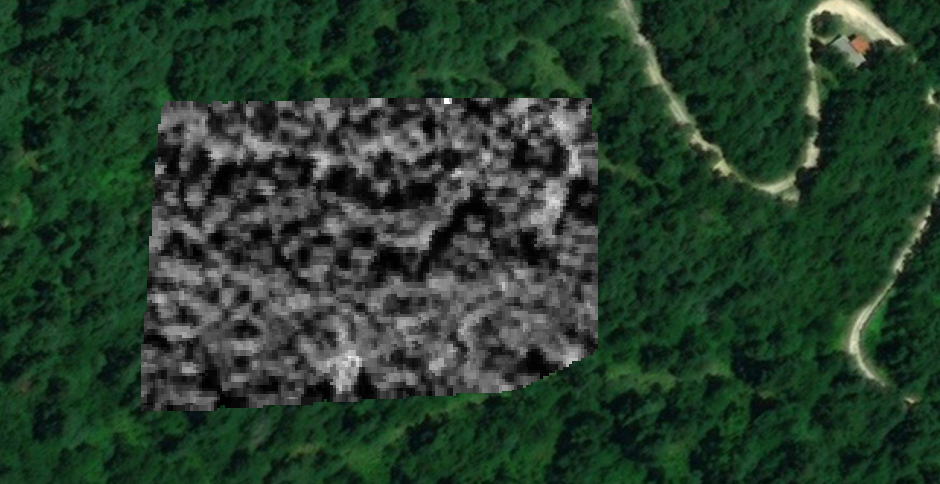 ]] --- class: inverse, center, middle # Action B1.1: Spatial mapping using statistical and machine-learning data analysis <html><div style='float:left'></div><hr color='#EB811B' size=1px width=720px></html> --- # Action B1.1: Spatial mapping .center[ 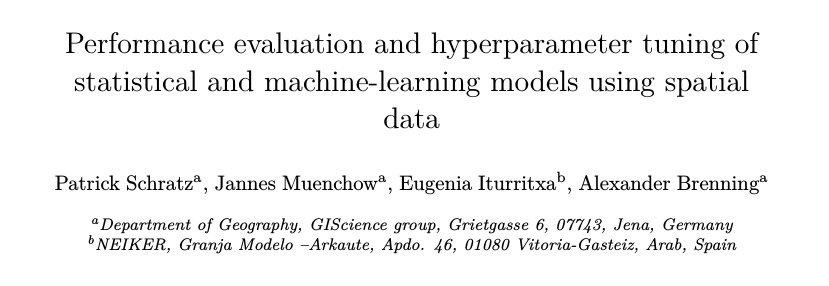 ] **Analysis goal:** Which model performs best in classifying infested trees (Diplodia Pinea) using environmental variables as predictors? **Predictors:** Temperature, precipitation, tree age, soil type, lithology type, pH value, hail damage, elevation, slope **Related work:** Iturritxa et al. (2014): Spatial analysis of the risk Monterey pine plantations. This worked analysed the influence of the predictor variables using parametric models (GLM, GAM) while the current analysis compared statistical and machine-learning models focusing on predictive performance. --- # Action B1.1: Spatial mapping ## Key Points: * State-of-the-art parametric and non-parametric models (BRT, GAM, GLM, KNN, RF, SVM) * Accounting for spatial autocorrelation by using bias-reduced **spatial cross-validation** * Extensive **hyperparameter tuning** of machine-learning models to ensure best possible performance results \>>> "How-to" guide for bias-reduced spatial model comparison analysis. --- # Action B1.1: Spatial mapping ## Performance results .center[ 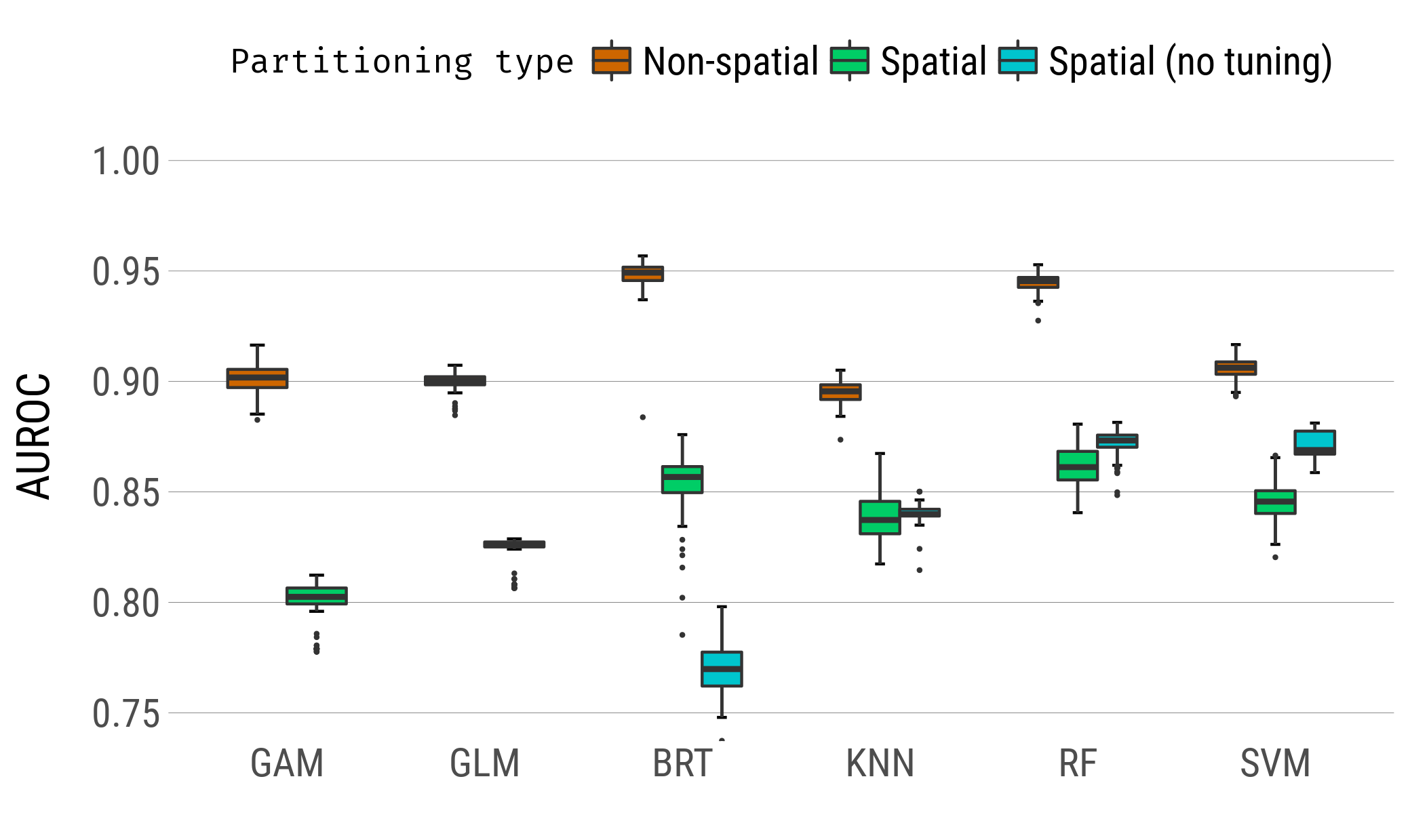 ] --- # Action B1.1: Spatial mapping ## Exemplary hyperparameter tuning result .center[ 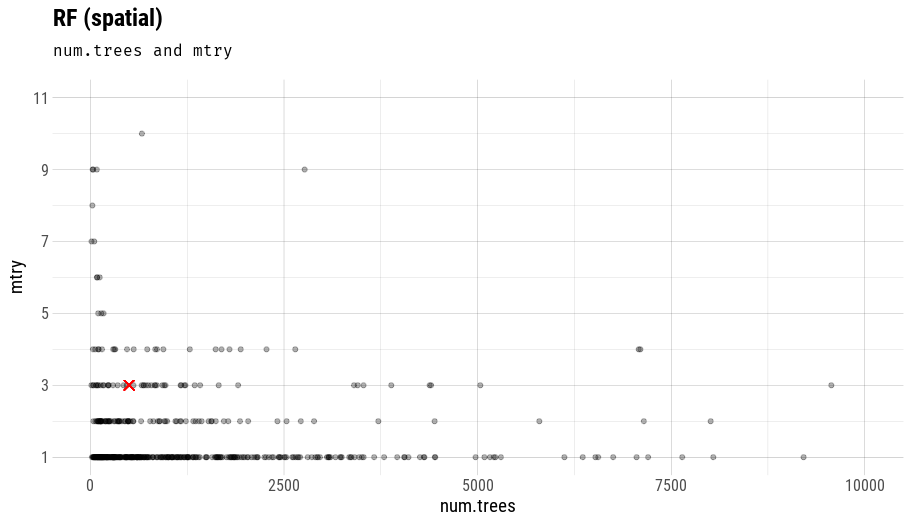 ] --- # Action B1.1: Spatial mapping ## Runtime comparison .center[ 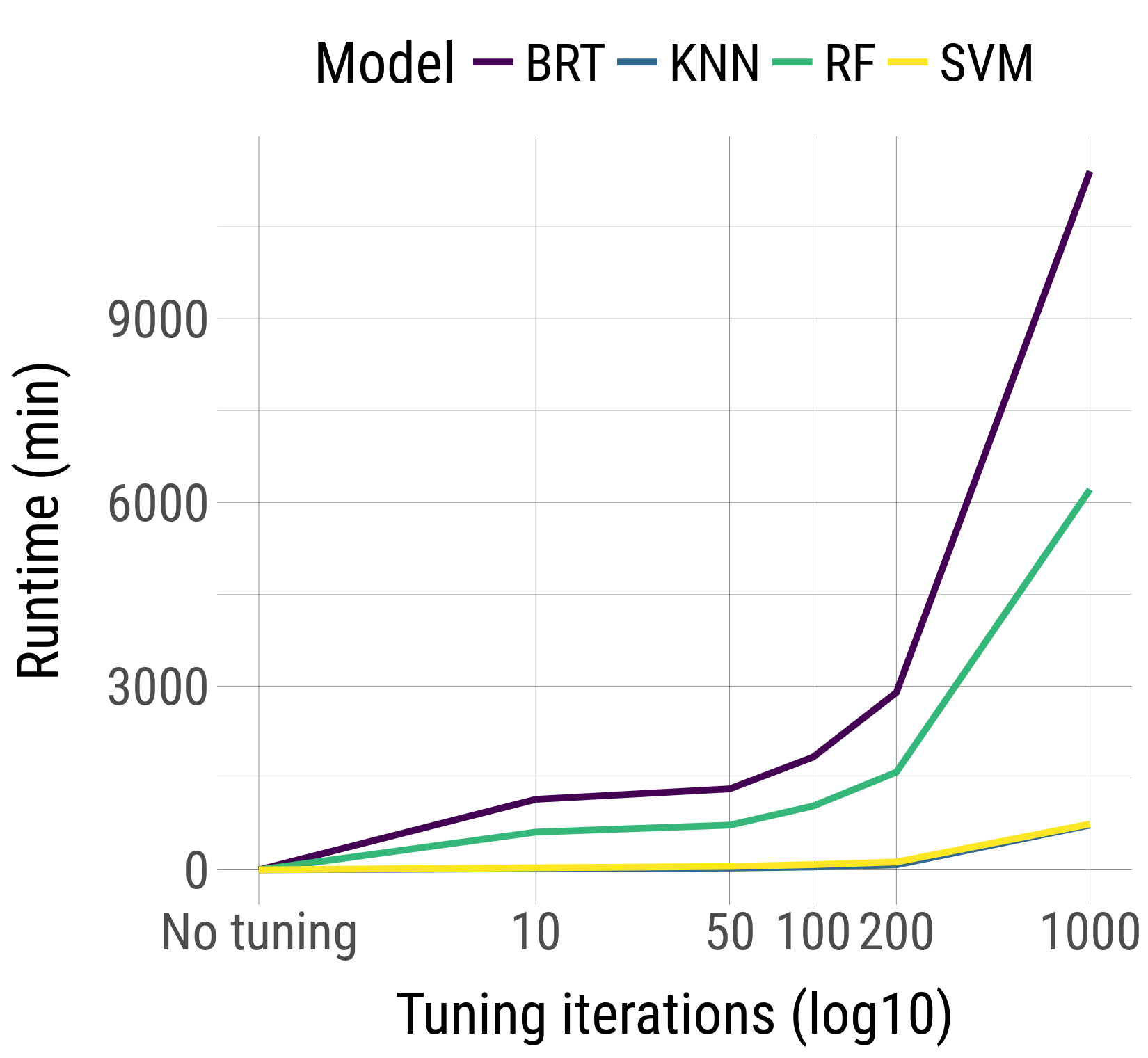 ] --- # Action B1.1: Spatial mapping ## Ridge regression analysis of hyperspectral data **Goal:** Find vegetations indices which reveal a pattern in defoliation of infested trees **Approach:** Calculate all possible vegetation indices + narrow band indices ( `\(\frac{B1 + B2}{B1 - B2)}\)` ) on different resolutions (1m - 5m). This results in a data set with 30k+ variables which are modelled using ridge regression (M. Pena). **Data sets**: Demonstration plots (Laukiz I, Laukiz II, Oiartzun, Luiando) --- # Action B1.1: Spatial mapping ## Ridge regression analysis of hyperspectral data Pearson’s correlation coefficient between more than 30.000 indices and the observed defoliation in the field (Laukiz I) .center[  ] --- # Action B1.1: Spatial mapping ## Ridge regression analysis of hyperspectral data .center[ 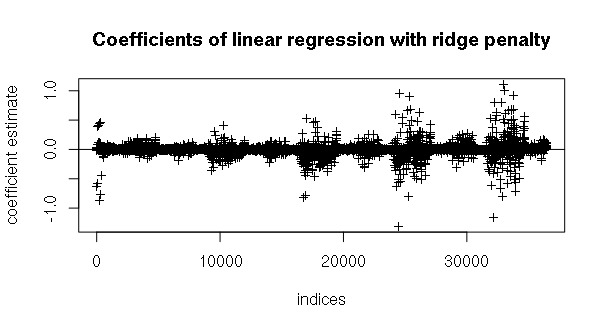 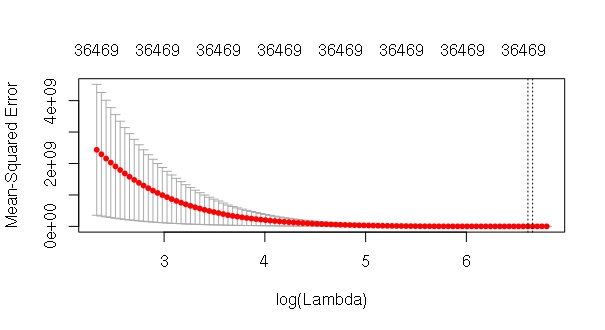 ] --- # Action B1.1: Spatial mapping ## Milestone and deliverable contributions * Guide with the identification and characterization of invasive and pathogenic agents (10/2018) *B1* *Deliverable* * Integrated analysis of characterization results at large scale (01/2019) *B1* *Deliverable* * Developed model of forest disease potential (10/2018) *B1* *Milestone* * Data for spatial analysis compiled (10/2018) *B1* *Milestone* * Final selection of algorithm for remotely-sensed forest health mapping (10/2018) *B1* *Milestone* * Design and study of algorithms (10/2018) *B3* *Milestone* --- class: inverse, center, middle # Outlook <html><div style='float:left'></div><hr color='#EB811B' size=1px width=720px></html> --- # Outlook * Modeling of pathogen **Armillaria** using environmental variables as predictors and utilizing the winning algorithm of the model comparison analysis (Random Forest) * Model comparison analysis of **defoliation** using hyperspectral indices as predictors including hyperparameter tuning * Time-series analysis of acquired **Sentinel-2 data** * Analysis of **new in-situ data** acquired by NEIKER in October 2017 (received this week)